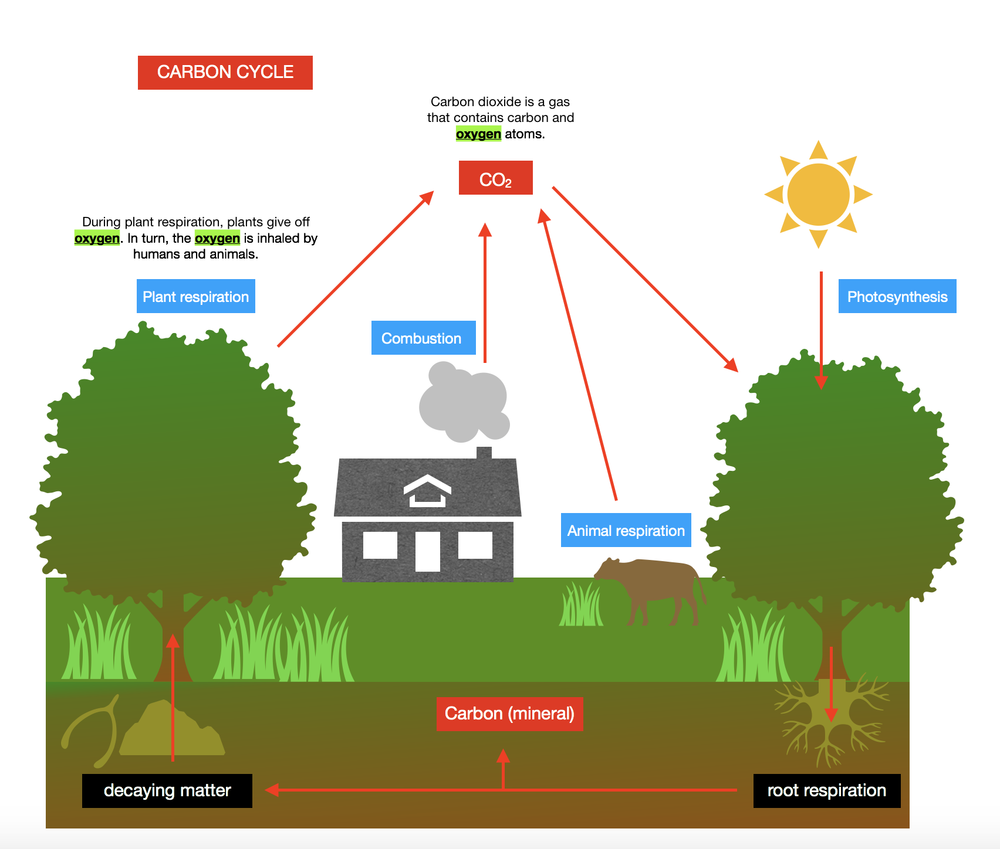
Miller and Levine Biology
1st Edition
ISBN: 9780328925124
Textbook solutions
All Solutions
Page 131: Review
Exercise 1
Result
1 of 1
Energy usually flows through a linear path or one-way stream. Unlike energy, matter is recycled using biogeochemical cycles, which is driven by the flow of energy that moves around the biosphere.
Exercise 2
Result
1 of 1
Water from the Earth’s surface enters the atmosphere through evaporation and transpiration. Evaporation occurs when the heat from the sun evaporates the water from oceans, lakes, rivers, and other large bodies of water. On the other hand, transpiration occurs when plants lose water by the means of their leaves.
Exercise 3
Result
1 of 1
Nutrients are necessary for the survival of living organisms, which is similar to the function of the gasoline used by cars. In this case, nutrients are required by the cells in carrying out their processes or functions.
Exercise 4
Result
1 of 1
A limiting nutrient refers to the nutrient that restricts productivity due to its short supply. For example, nitrogen is usually required by most plants on a daily basis in order to grow abundantly. However, the soil only contains a small amount of nitrogen. Because of this, nitrogen becomes a limiting nutrient. When this nutrient is low on supply, the rate of productivity of plants will be restricted. This causes farmers to use fertilizers on plants to make up for the lack of nutrients in the soil.
Exercise 5
Result
1 of 1
If vast areas of forests are burned for farming, the amount of carbon that is released into the biosphere will increase; hence, the amount of carbon dioxide levels in the atmosphere will also increase. This event will contribute to the greenhouse effect and raise the global temperature.
Exercise 6
Result
1 of 1
The water cycle explains how the water continuously moves in the Earth’s surface and atmosphere. It is also known as the hydrologic cycle. Since Earth contains large bodies of water such as the ocean. When the water molecules from the ocean start to evaporate due to the sun’s heat, a process called evaporation takes place. In this process, the vapor rises into the atmosphere. Then, condensation takes place once the water vapor forms clouds. If the clouds accumulate too much water vapor, it gets heavy. As a result, precipitation occurs. The clouds are turned into water droplets that fall back into the ocean or onto the land. Once the water lands on the Earth’s surface, it gets soaked and becomes groundwater. The water goes back into the rivers, lakes, and other bodies of water when the water begins to seep out of the ground.
Exercise 7
Step 1
1 of 2
The diagram below shows how oxygen is involved in the carbon cycle.
1. Oxygen atoms are found in carbon dioxide.
2. During plant respiration, plants give off oxygen. It is also a by-product of photosynthesis.
3. In animal respiration, oxygen is inhaled by humans and animals. It is needed by the cells to perform cell respiration.
1. Oxygen atoms are found in carbon dioxide.
2. During plant respiration, plants give off oxygen. It is also a by-product of photosynthesis.
3. In animal respiration, oxygen is inhaled by humans and animals. It is needed by the cells to perform cell respiration.

Result
2 of 2
The diagram below shows how oxygen is involved in the carbon cycle.
1. Oxygen atoms are found in carbon dioxide.
2. During plant respiration, plants give off oxygen. It is also a by-product of photosynthesis.
3. In animal respiration, oxygen is inhaled by humans and animals. It is needed by the cells to perform cell respiration. (Click to see diagram)
1. Oxygen atoms are found in carbon dioxide.
2. During plant respiration, plants give off oxygen. It is also a by-product of photosynthesis.
3. In animal respiration, oxygen is inhaled by humans and animals. It is needed by the cells to perform cell respiration. (Click to see diagram)
Exercise 8
Result
1 of 1
An algal bloom happens when the nutrient level or the concentration phosphorus and nitrogen in the water are beyond the normal level. The high concentration of phosphorus and nitrogen usually come from fertilizer runoffs. When farmers apply fertilizers, which contain nitrogen and phosphorus, into their crops, some are absorbed by the soil. However, there are instances when the excess is washed off into rivers and oceans by the heavy rains. This event leads to the excessive growth of the algae population in freshwater and marine environments.
unlock

